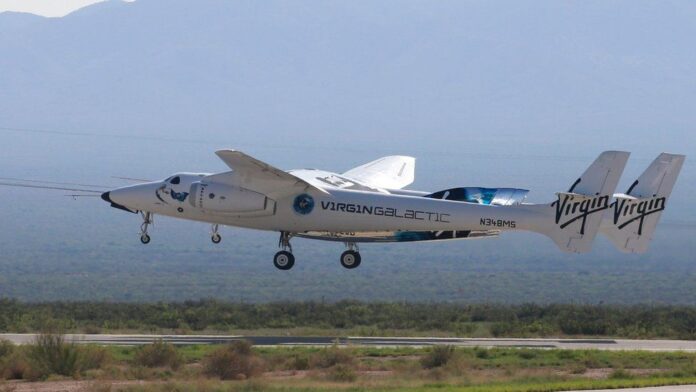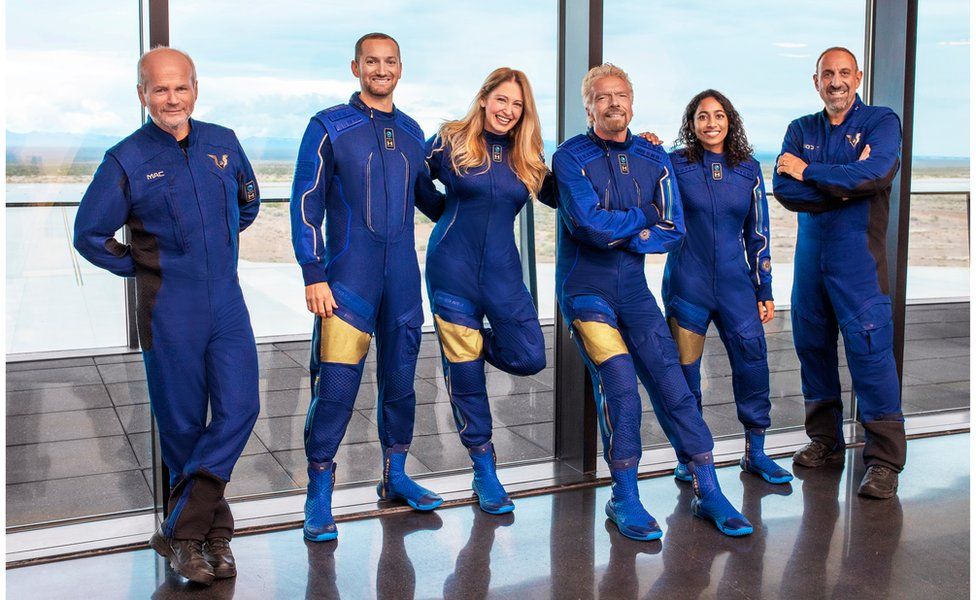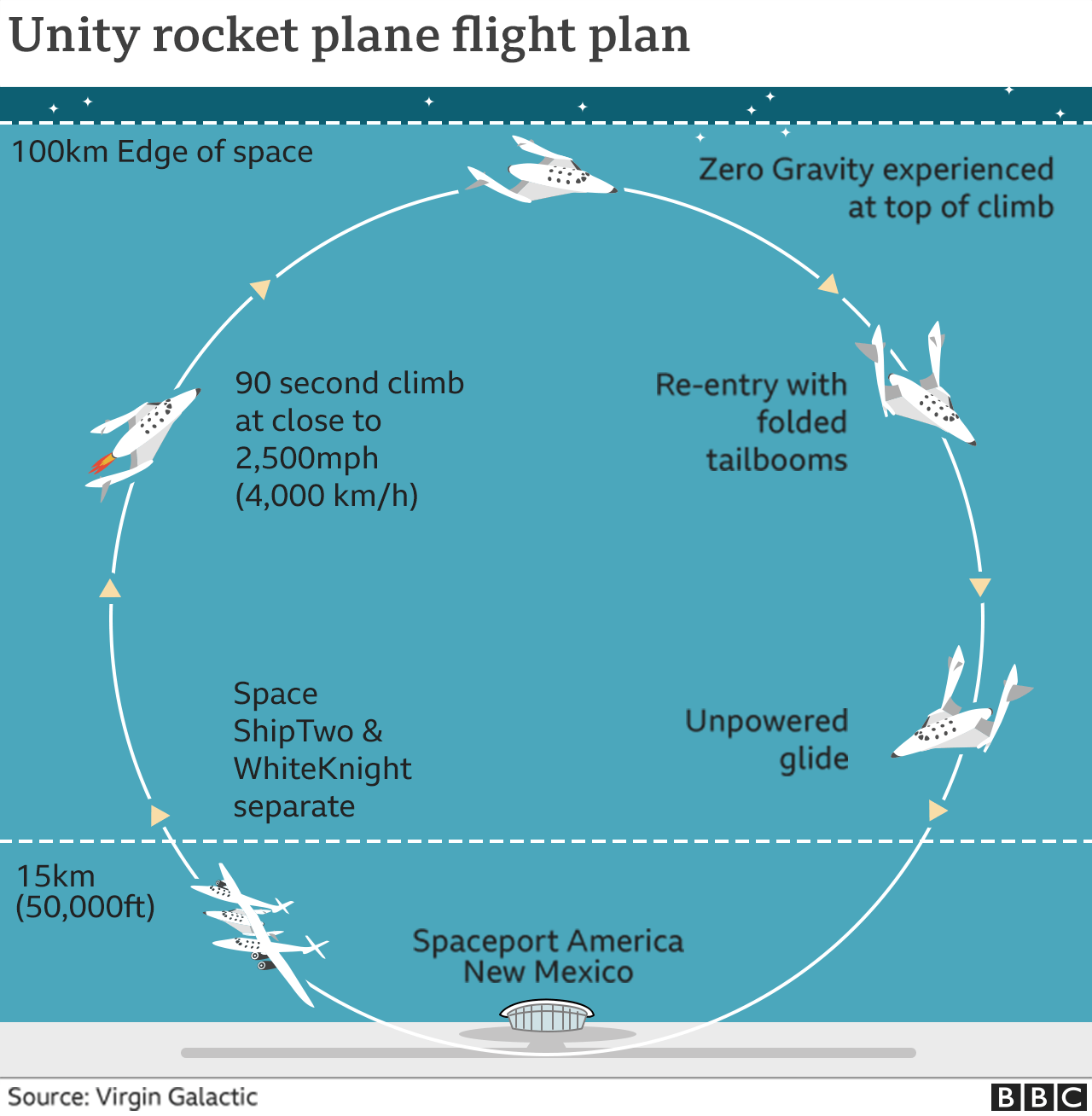
UK businessman Sir Richard Branson is on his way to fulfilling a lifetime’s ambition: flying to the edge of space.
His Virgin Galactic rocket plane has taken off for a 1.5-hour mission which will see it reach an altitude where the sky turns black and the Earth’s horizon curves away into the distance.
The entrepreneur says he wants to evaluate the experience before allowing paying customers aboard next year.
The mission above New Mexico began shortly after 08:30 EST (15:30 BST).
Virgin Galactic is providing an online stream of the event.
It’s been a long road for Sir Richard to get to this point. He first announced his intention to make a space plane in 2004, with the expectation he’d have a commercial service available by 2007.
But technical difficulties, including a fatal crash during a development flight in 2014, have made the space project one of the most challenging ventures of his career.
 IMAGE COPYRIGHTVIRGIN GALACTIC
IMAGE COPYRIGHTVIRGIN GALACTIC“I’ve wanted to go to space since I was a kid, and I want to enable hopefully hundreds of thousands of other people over the next 100 years to be able to go to space,” Sir Richard told the BBC.
“And why shouldn’t they go to space? Space is extraordinary; the Universe is magnificent. I want people to be able to look back at our beautiful Earth and come home and work very hard to try to do magic to it to look after it.”
How does his rocket plane work?

The vehicle, known as Unity, will be carried by a much bigger aeroplane to an altitude of about 15km (50,000ft), where it will be released.
A rocket motor in the back of Unity will then ignite and blast the ship skyward. The motor will burn for 60 seconds, by which time Sir Richard, his three crewmates and the two pilots up front, will have a remarkable view of the planet below.
The maximum height achievable by Unity is roughly 90km (55 miles, or 295,000ft), but towards the top of the climb Sir Richard will start to enjoy a few minutes of weightlessness and he’ll be able to float around the cabin and to look out of the window.
Eventually, though, he’ll have to strap back into his seat for the glide return to the spaceport in New Mexico.
What will he see from the window?
Sir Richard will be taking instruction throughout the flight from Beth Moses. She’s the chief astronaut instructor at the businessman’s Virgin Galactic company. Apart from the firm’s cadre of test pilots, Moses is the only person who’s so far experienced the exhilaration of an ascent. The view out of the window, she says, is “just phenomenal”.
“Pictures don’t do it justice. It’s just so bright and beautiful. I saw the ocean, and halfway up the US and halfway down into Mexico. I saw the green of the land and the white snow-capped mountains,” she told BBC News.
“Because you are weightless and still, and the ship has come to a stop, you can just soak it in, in a really timeless way. It stuck in my soul.”
Who is Sir Richard’s competition?

Unity is a sub-orbital vehicle. This means it can’t achieve the velocity and altitude necessary to keep it up in space to circle the globe.
The only other near-market sub-orbital system belongs to Amazon.com founder, Jeff Bezos. He has a rocket and capsule he calls New Shepard, and he will fly on its inaugural crewed flight on 20 July.
The retail billionaire is going to ride to just over 100km above Texas, alongside his brother, Mark; the famed female aviator Wally Funk; and a mystery individual who bid $28m (£20m) in a ticket auction.
But while Sir Richard has a line of some 600 individuals who’ve already paid deposits for tickets priced at up to $250,000 (£180,000), Mr Bezos has said little yet about how he intends to commercialize New Shepard.
Source: BBC

